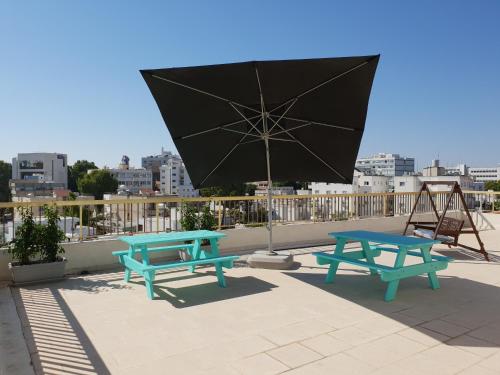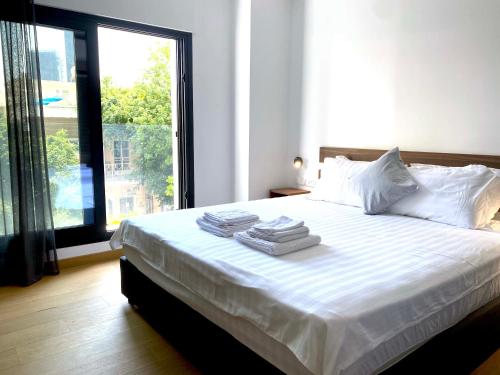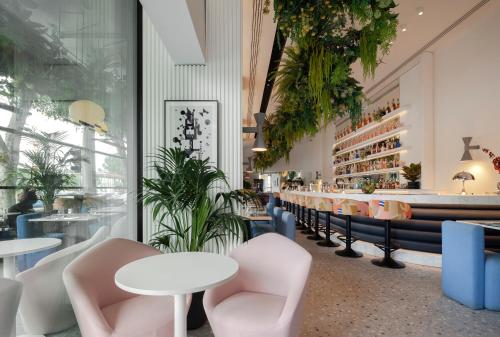Nicosia, Cyprus
Nicosia is a tale of two cities. It is the story of contemporary life and the legend of ancient history.
It is ruins and revival, culture and cafes. Nicosia is a time capsule in a permanent state of being opened.
It’s no surprise, of course, that the capital of Cyprus would have this paradox. The country itself is thousands of years old and has one of the richest and best-preserved ancient histories of the Mediterranean.
The island of myths and legends is intertwined with the development of the gods that would influence European culture until today.
And that influence played a large part in the internal development of Cyprus and, by association, Nicosia.
The city has been inhabited for 4500 years and has been the country’s capital since the 10th century. There is an almost-dizzying mix of stories layered on top of each other and blended by time.
It’s with all of this that I look back on the small amount of time I spent in Nicosia and wonder how I was able to take it all in.
I was enthralled by the city – by its historical import, by the sense of exploration that brings, by the bright flashes of modernity, and by the energy of the local community.
So… how did I see all of this?
The Cyprus Museum
Perhaps it’s best to start at the Cyprus Museum, home to the oldest and best collection of archaeological artefacts in the country.
It’s here that you can trace the story of the island from as early as the Neolithic Period. As you walk through the museum, room after room, it’s amazing how much there is to see and how well it has been displayed.
And what’s particularly fascinating is how it all fits together.
I’ve written previously about Aphrodite, the Goddess of Love, and her connection to Cyprus.
Although it is in Pafos – where legend says she was born – that her story looms the largest, the museum shows she is truly the island’s deity.
The development of her cult and form took many centuries and evolved significantly, as you can see from the original simple iconography through to the complex marble statues we recognise today.
What strikes me most is how significant the history of Cyprus is and how easy it had been for me to miss this all my life, with so much emphasis on traditional Ancient Greek and Roman stories.
Starting a visit to Nicosia at the Cyprus Museum gives me the perspective I need to go forward.
The Cyprus Museum is open:
Tuesday to Friday from 8:00 – 18:00
Saturday from 9:00 – 17:00
Sunday from 10:00 – 13:00.
The museum is closed on Monday.
Admission is free.
Ag Leventis Gallery
And go forward, I do… in time, to the AG Leventis Gallery. It’s just a five-minute walk down the road from the Cyprus Museum but it jumps us forward many centuries.
The gallery was opened in 2014 and has an excellent collection of European, Greek and Cypriot paintings. Of course, today, it’s the artists from Cyprus that we are interested in.
A very conscious decision was made by the curators to collect works that showed the birth and development of the modern art scene in the country. This has been done by focusing on artists who were born between 1884 and 1930.
What you find is a fascinating mix of artistic styles – some influenced by those who studied European trends overseas, some who have looked to classical approaches like Byzantine for inspiration, and those who have tried to develop unique imagery that would try to define modern Cypriot art.
The most famous piece in the gallery, well worth a look, is ‘The World of Cyprus’ by Adamantios Diamantis.
It is more than 17 metres long and is based on 75 drawings of the people and landscapes of the country that were done in the middle of the 1900s.
To be honest, I find it slightly depressing at first – such dark colours and such sombre moods. All I see initially is religious repression and a male-chauvinistic society.
But there’s much more to it than that. It is about patriotism and a celebration of local culture. An idea that was only going to grow in the coming decades.
Ag Leventis Gallery is open Wednesday from Sunday from 10:00 – 17:00 and Wednesdays until 20:00.
A standard ticket is €5 and a concession is €3.
Old City
I wander into the Old City of Nicosia, just a short stroll from the gallery. Although the old stone walls that once protected the city are still here, a new plaza is being built along one side to create a modern public space.
A tale of two cities.
But once in the heart of the urban maze, it feels more traditional, more what I expected.
There are public buildings with the columns of the Classical Period, pedestrian malls with shade clothes to protect from the bright Mediterranean sun, and balconies for old women to watch who pass by.
At Faneromeni Square, I pop into Faneromeni Church, the largest within the city walls. It was built in 1872 and is a reminder of the importance of the Orthodox Church here – in the past and still to the present day.
Around the square are cafes with tables and chairs out on the pavement under umbrellas. In the heat, people are more likely to sit inside but, as soon as it gets cooler, the area is teeming.
This is the visible heart of the local culture, the cafes of Nicosia. A meeting place for all ages, the social facilitator, the great passer of time.
I wouldn’t dare try to guess how long the people of Nicosia have had a cafe culture like this – it probably goes back hundreds, if not thousands, of years.
I’ve seen similar things in my travels through the Mediterranean and Middle East. The importance can not be overstated.
And this is why I find the trend of modern cafes in the city so interesting.
After walking around in the heat for a couple of hours, I slump into the cushioned seat of one of these cafes, fan blowing towards me.
It’s called Pieto and is in the pedestrian alley between two main roads. The tables outside fit around pot plants and couches, music plays and the menu is extensive. It is… dare I say it… a bit hipster.
Some of the cafes like this will become bars or live music venues later in the night, they’ll offer a menu of traditional food with a modern twist, their photos will appear on Instagram, and they will be about the scene and being seen as much as anything else.
They are, in other words, perfectly made for the millennials of Cyprus.
I love it. This is what I find so interesting. Compared to the country’s beach resorts, which have developed themselves to attract sun-seekers from across Europe, Nicosia is only trying to impress its own.
It is authentically Cypriot and, even as it evolves, it never lets go of that.
It may be a tale of two cities – of old and new – but it is a tale of only one culture.
THE BEST ACCOMMODATION IN NICOSIA
You’ll find great places to stay in Nicosia’s city centre, around the Byzantine Museum and Cyprus Archaeological Museum.
BACKPACKER

Right in the city centre, NEX Hostel has spacious rooms, good storage, and a huge rooftop terrace.
BUDGET

With modern amenities and a central location, Urban Habitat Executive Suites offers great value and helpful staff.
BOUTIQUE

The artistic flourishes add to the atmosphere at MAP Boutique Hotel, which is clean and modern and close to the Old Town.
LUXURY

The balconies have a beautiful view at Gate Twenty Two Boutique Hotel, the rooms are stylish, and there’s a great free breakfast.
Time Travel Turtle was supported by the Cyprus Tourism Organisation but the opinions, over-written descriptions and bad jokes are his own.
Great, things of these places are looking so good. Gallery art is good to visit here and have good collection. stunning photos you shared.
Interesting article but failure to note that the city is divided and a different – but equally fascinating culture – exists on the other side.
I visited Nicosia before tree years ago and very interesant for me was one part of history of Cyprus- know like a Cyprus conflict or Cyprus problem between Greek Cypriots and Turkish Cypriots was begining in 1974 with Turkish invasion in island.
Nicosia until now is the only one separated capital in the Europe. I went trough the Ledra street crossing point separating Nikosa into Turkish (Levkosa) end Cypros(Nicosia).
I see so muny differances between tho part of one city. It been almost unrealistic!